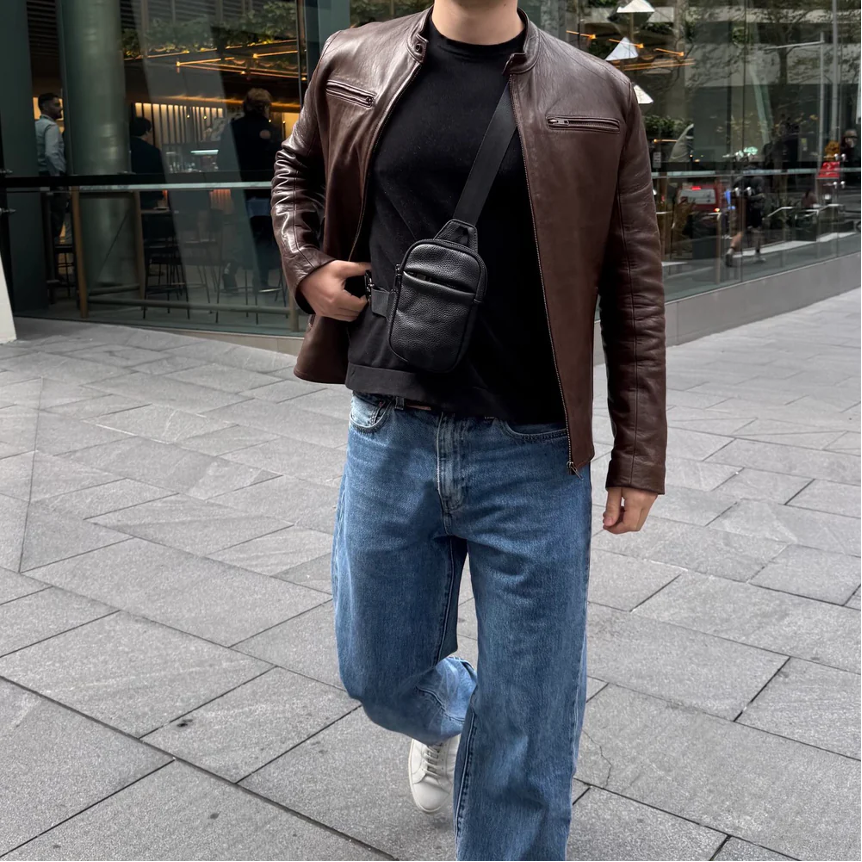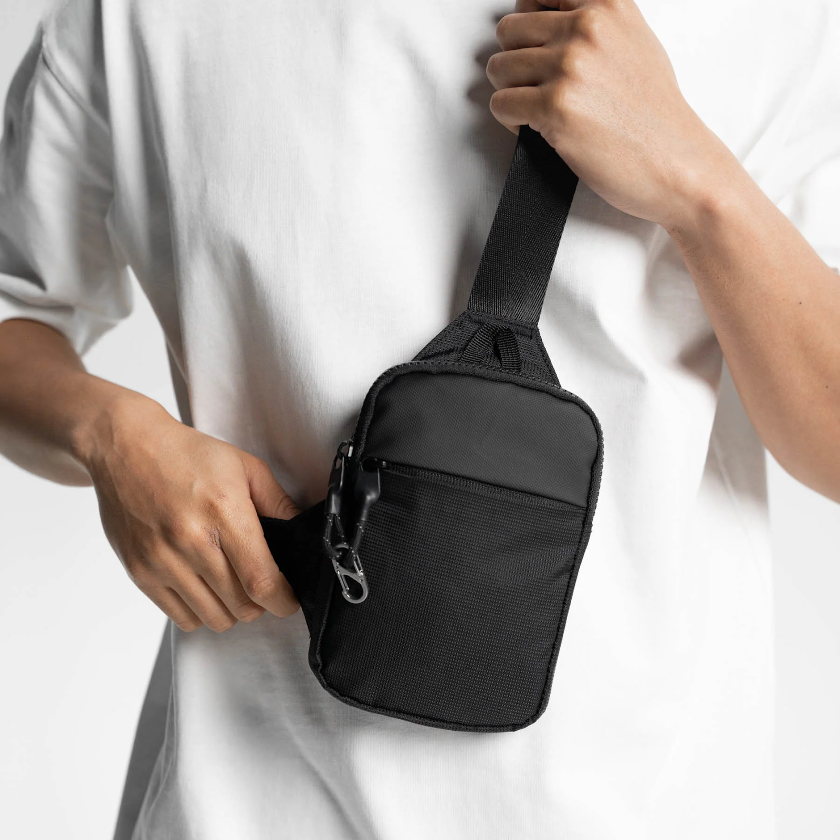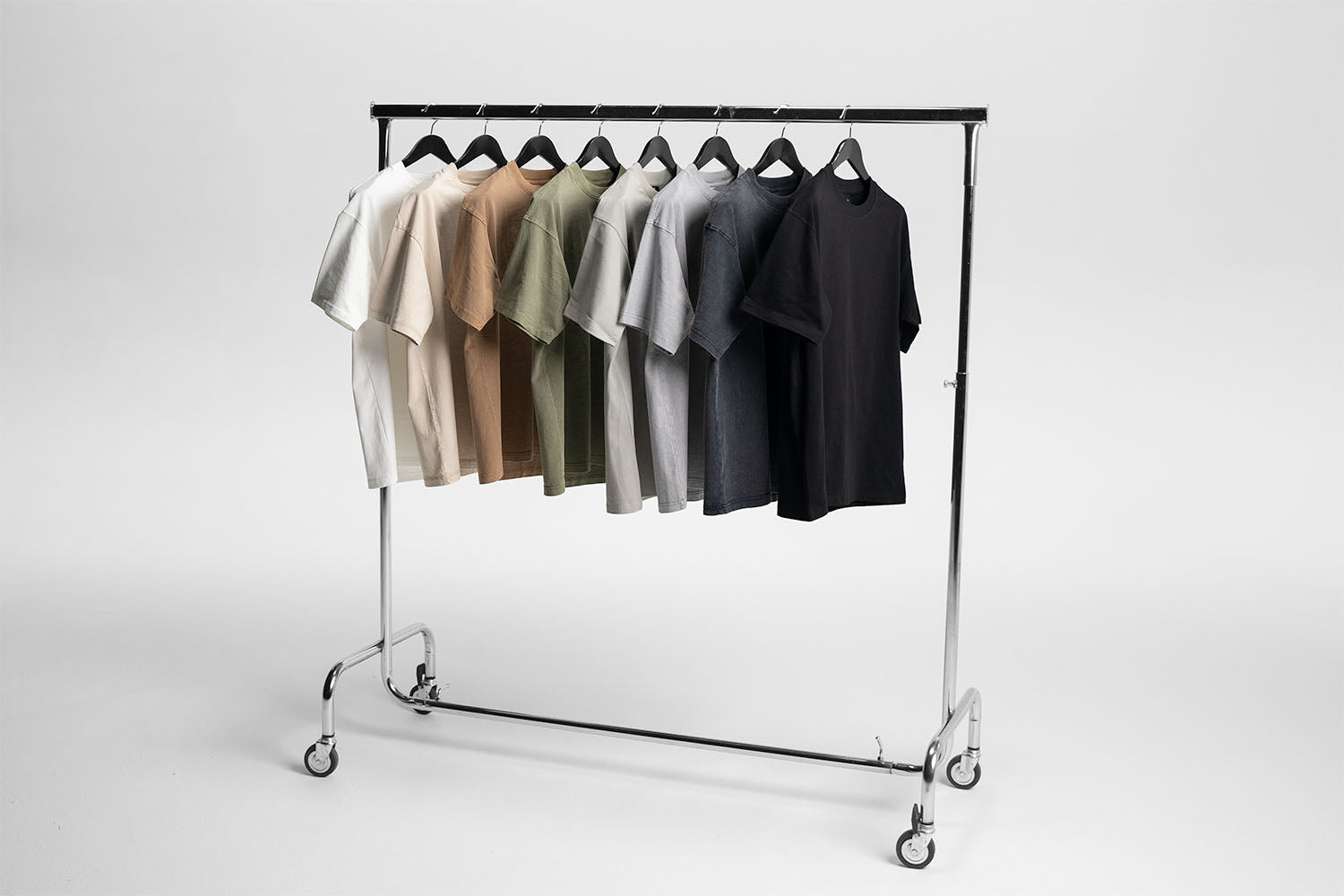Key Takeaways
- Sling bags offer superior accessibility during hikes, allowing quick gear access without removing the pack entirely.
- These compact carriers excel on short treks (1–4 hours) but typically lack the capacity and comfort needed for longer adventures.
- Modern hiking sling bags from Concept Global incorporate specialized features for trail use.
- Learning proper packing techniques can significantly improve your hiking experience with a sling bag.
- Concept Global offers quality hiking solutions like sling bags that combine trail-ready functionality with contemporary design, backed by worldwide shipping, 60-day returns, and the trust of over 100,000 satisfied customers across 50 countries.
Why Hikers Are Switching to Sling Bags
The appeal of sling bags for hiking boils down to three key factors: accessibility, minimalism, and versatility. Unlike backpacks that require removal to access contents, a well-designed sling bag can be rotated to your front for immediate gear access without breaking stride.
This design brilliantly removes the frustrating stop-and-rummage routine that traditional hikers face when needing a snack, map, or camera. The minimalist nature of sling bags also encourages smarter packing decisions.
With typical capacities ranging from 5–12 liters (compared to day packs at 20–30 liters), sling bags force hikers to prioritize essentials and leave unnecessary weight behind. Many hikers discover they actually enjoy the freedom of carrying less once they adapt to this streamlined approach.
|
Modern Anti-Theft Sling Bags for Smart Travelers. High-Quality Basics Without the Hype Tax! Upgrade from bulky backpacks to sleek, secure sling bags with RFID protection and anti-theft features. Join 100,000+ customers who trust our travel solutions. Smart Security Features:
Why Choose Concept Global:
60-Day Money-Back Guarantee: Not satisfied? Full refund, no questions asked. |
Pros of Sling Bags Over Traditional Backpacks
Specific hiking scenarios showcase sling bags at their best. Understanding these use cases helps determine if this carrying style matches your typical outdoor adventures.
Quick Access to Essentials Without Removing Your Pack
The defining advantage of sling bags is their unmatched accessibility while on the move. The signature swivel movement—rotating the bag from back to front without removing it—creates a practical advantage for photographers, birdwatchers, and hikers who frequently need gear access.
This design brilliantly takes away the frustrating backpack shuffle: stopping, removing your pack, setting it down (often in mud or dust), digging for items, repacking, and shouldering it again.
Perfect for Short Day Hikes Under 4 Hours
Sling bags shine brightest on shorter adventures with predictable conditions. Morning summit hikes, waterfall treks, and afternoon nature walks rarely require extensive gear or supplies.
These scenarios play to the sling bag's strengths, minimal weight, quick access, and streamlined profile.
Better Ventilation for Hot Weather Hikes
The minimalist design of sling bags creates substantially less back coverage compared to traditional packs, resulting in significantly improved ventilation during hot weather hikes.
This reduced contact area allows greater airflow and heat dissipation, a noticeable comfort advantage when temperatures climb above 80°F.
Drawbacks of Sling Bags
Limited Capacity Restricts Gear Options
The most obvious limitation of sling bags is their restricted carrying capacity. Most hiking-oriented sling designs offer between 5–12 liters of storage space, roughly one-third to one-half the capacity of standard day packs.
This constraint becomes critical when conditions change unexpectedly or emergency situations arise requiring additional supplies.
Stability Issues on Technical Terrain
The cross-body design that makes sling bags convenient for access unfortunately creates stability problems during technical hiking sections. When scrambling, climbing, or navigating challenging terrain, the single attachment point allows the bag to swing or shift position unpredictably.
For hikers who regularly tackle technical terrain or off-trail routes, this stability issue presents a significant disadvantage.
2 Best Sling Bags for Options for Hiking
1. Concept Global Travel Sling Bag
The Concept Global Travel Sling Bag is a top choice for everyday hikers who prioritize functionality and security without breaking the bank.
The Concept Global Travel Sling Bag features comprehensive anti-theft protection including RFID (Radio Frequency Identification) blocking, anti-theft zipper locks, and a cut-resistant strap to keep your valuables safe from pickpockets.
Made with premium water-resistant materials like 300D nylon fabric , it's designed to withstand various conditions while maintaining a slim, minimalist profile that can be worn discreetly under a jacket.
Available in regular (1L) and large (1.6L) sizes (regular is shown above), this bag accommodates essentials from smartphones to small tablets, making it ideal for both travel and daily use.
2. Sling Bag CG1
The Sling Bag CG1 is the premium option designed for professionals who want luxury aesthetics combined with security features.
Made from genuine leather with executive-grade hardware, the Sling Bag CG1 offers the same anti-theft protection as the Travel Sling Bag (RFID protection, anti-theft zippers, cut-resistant strap) but with a sophisticated appearance that rivals bags costing $550 or more.
It's specifically targeted at professionals who need security and peace of mind while maintaining a polished look when hiking with business partners or colleagues.
How to Pack a Sling Bag for Maximum Hiking Efficiency
The limited capacity of sling bags demands thoughtful packing strategies that differ significantly from traditional backpack approaches.
Maximizing the utility of these compact carriers requires both careful gear selection and strategic organization.
Essential Gear That Fits Perfectly in a Sling
Successful sling bag hiking starts with ruthless prioritization of truly essential items. For most day hikes under 4 hours in favorable conditions, this typically includes: a 1-liter water bottle, weather-appropriate insulating layer, energy-dense snacks, navigation tools (phone/map), basic first aid supplies, sun protection, and a compact emergency kit.
This streamlined kit generally weighs 3–7 pounds and fits comfortably within the 5–10 liter capacity of most hiking-oriented sling designs while maintaining reasonable carrying comfort.
Smart Weight Distribution Techniques
The single-shoulder design of sling bags makes weight distribution particularly critical for comfort. The heaviest items (typically water) should be positioned closest to your back and centered vertically in the bag to minimize leverage and shoulder strain.
Medium-weight items belong in the middle zone, while the lightest items work best in outer pockets or sections furthest from your body. This concentric weight arrangement creates a more neutral carrying position that reduces shoulder fatigue.
Accessibility-First Packing Method
The signature advantage of sling bags is their superior accessibility, but this benefit disappears without thoughtful organization. Items requiring frequent access (snacks, phone, camera, sunscreen) should occupy dedicated quick-access pockets or the uppermost section of the main compartment.
Emergency items and rarely-needed gear belong at the bottom, while mid-frequency items should occupy the middle zones. This stratified organization transforms a sling bag from merely a smaller backpack into a genuinely different carrying system optimized for accessibility.
Find Your Perfect Hiking Companion with Concept Global
At Concept Global, we recognize that every outdoor adventure has unique demands. Our carefully designed sling bags combine the accessibility and minimalist benefits hikers love with durable construction that withstands trail conditions.
Whether you're capturing wildlife moments, tackling morning summit hikes, or exploring nature trails, our sling bags provide the perfect balance of functionality and style.
The key lies in choosing the right tool for your specific hiking style. Our Travel Sling Bag and Sling Bag CG1 offer the versatility needed for various outdoor activities, backed by our 60-day money-back guarantee and trusted by over 100,000 customers worldwide.
Don't let gear limitations define your adventures. Explore with confidence knowing that our innovative designs, worldwide shipping, and commitment to quality ensure your outdoor experiences are enhanced, not hindered, by your choice of carrying system.
SHOP WITH CONCEPT GLOBAL TODAY →
Frequently Asked Questions (FAQ)
Are sling bags comfortable for long hiking distances?
Sling bags remain comfortable for hikes up to 3–4 hours under moderate conditions with proper packing (under 7 pounds). Beyond this threshold, the single-shoulder design creates concentrated pressure and muscle fatigue that outweighs convenience benefits, making traditional two-strap packs superior for full-day adventures.
Can I carry enough water in a sling bag for hiking?
Most sling bags accommodate only a single 1-liter water bottle or small hydration reservoir, limiting their use to shorter hikes or routes with reliable water sources. For longer excursions or hot weather conditions requiring 2+ liters, traditional backpacks with proper hydration systems provide better solutions.
What's the maximum weight I should carry in a sling bag while hiking?
The comfort threshold for most hikers is 7–8 pounds in a sling bag. Beyond this weight, the asymmetrical load distribution creates noticeable shoulder strain and fatigue. Loads should include essential items only: water, snacks, weather layer, navigation tools, and basic first aid supplies.
How do I prevent my sling bag from bouncing on technical terrain?
Position the bag higher on your back and tighten straps to create a compact profile. Models with compression straps should be fully tightened after packing. For technical descents, temporarily shift to the front-carrying position for better stability and foot placement visibility.
What makes Concept Global's sling bags suitable for hiking activities?
Concept Global's sling bags feature durable construction, weather-resistant materials, and thoughtful organization perfect for outdoor adventures. The Travel Sling Bag and CG1 models offer the accessibility benefits hikers love while maintaining the quality and style our 100,000+ customers trust, all backed by our 60-day guarantee and worldwide shipping.






Leave a comment
This site is protected by hCaptcha and the hCaptcha Privacy Policy and Terms of Service apply.